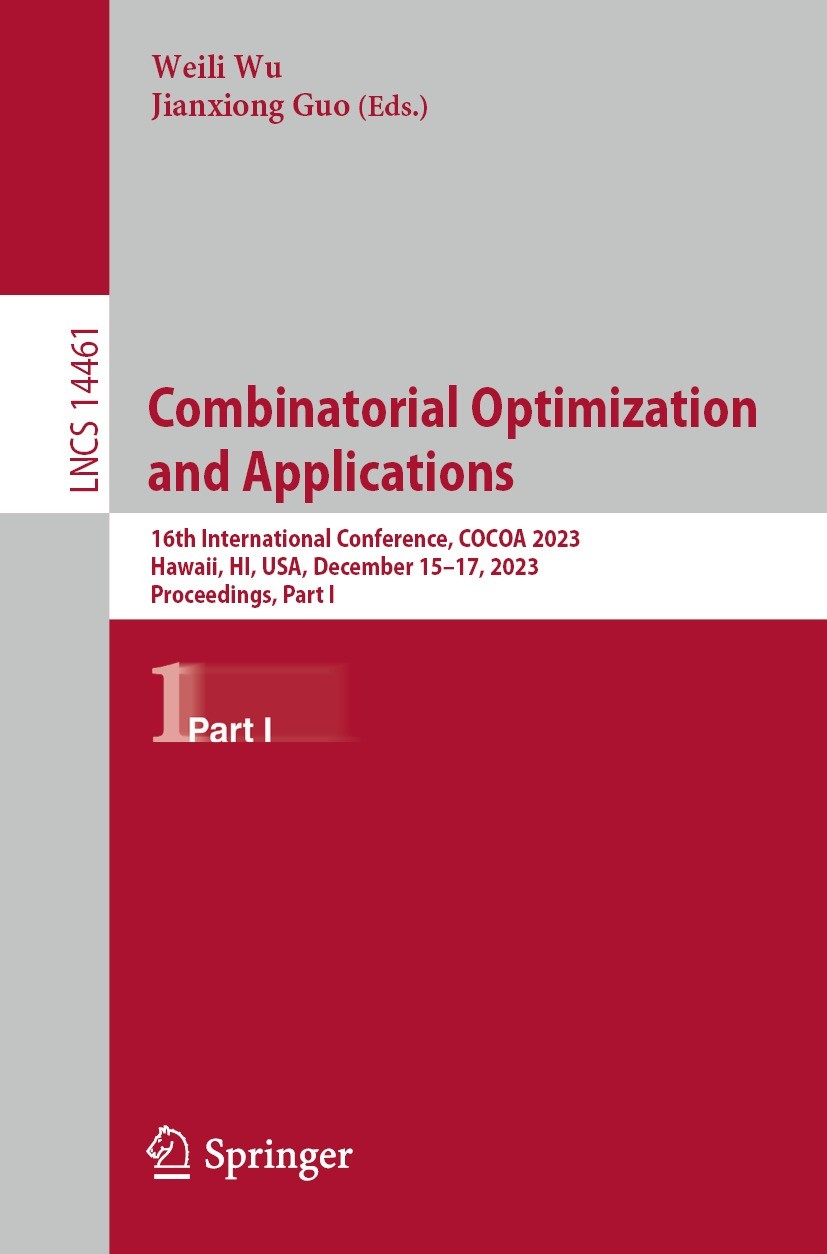| 书目名称 | Combinatorial Optimization and Applications | | 副标题 | 16th International C | | 编辑 | Weili Wu,Jianxiong Guo | | 视频video | http://file.papertrans.cn/230/229971/229971.mp4 | | 丛书名称 | Lecture Notes in Computer Science | | 图书封面 |  | | 描述 | The two-volume set LNCS 14461 and LNCS 14462 constitutes the refereed proceedings of the 17th International Conference on Combinatorial Optimization and Applications, COCOA 2023, held in Hawaii, HI, USA, during December 15–17, 2023. .The 73 full papers included in the proceedings were carefully reviewed and selected from 117 submissions. They were organized in topical sections as follows: .Part I: Optimization in graphs; scheduling; set-related optimization; applied optimization and algorithm; Graph planer and others;.Part II: Modeling and algorithms; complexity and approximation; combinatorics and computing; optimization and algorithms; extreme graph and others; machine learning, blockchain and others.. | | 出版日期 | Conference proceedings 2024 | | 关键词 | approximation algorithms; approximation theory; big data; communication systems; computational game theo | | 版次 | 1 | | doi | https://doi.org/10.1007/978-3-031-49611-0 | | isbn_softcover | 978-3-031-49610-3 | | isbn_ebook | 978-3-031-49611-0Series ISSN 0302-9743 Series E-ISSN 1611-3349 | | issn_series | 0302-9743 | | copyright | The Editor(s) (if applicable) and The Author(s), under exclusive license to Springer Nature Switzerl |
The information of publication is updating

|
|
 |Archiver|手机版|小黑屋|
派博传思国际
( 京公网安备110108008328)
GMT+8, 2025-12-15 11:57
|Archiver|手机版|小黑屋|
派博传思国际
( 京公网安备110108008328)
GMT+8, 2025-12-15 11:57


